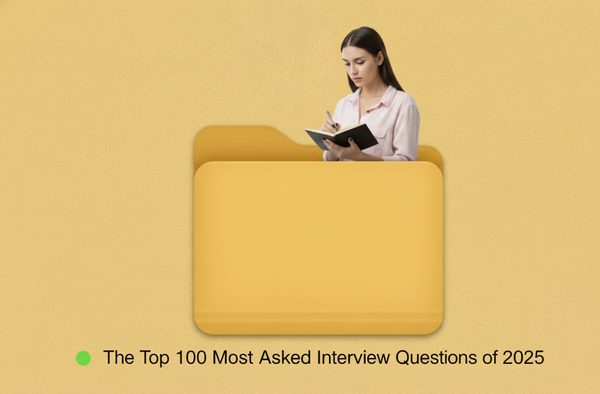Why Learning Fast Beats Learning Everything When You Reskill for the New Job Economy
Learn how to reskill in 60 days, gain in-demand skills, and master modern job hunting. Practical steps to land your dream role in today’s AI-driven economy.

The ground under the labor market is shifting, but it is not disappearing. AI is changing tasks across thousands of roles. That does not mean “most jobs are gone.” It does mean the mix of skills inside jobs is moving, and the way people get hired is changing with it. The smartest response is not panic. It is an aggressive plan to reskill with purpose, show evidence of results, and run a job search that does not rely on clicking “Apply” a hundred times.
This guide gives you a practical, evidence-based plan. It starts with what is actually changing, then tells you exactly what to learn, how to learn it, and how to run a job hunt that moves you to the front of the line.
What the shift really is
AI exposure is broad, but impact is uneven. In advanced economies, roughly 60 percent of jobs are exposed to AI in the sense that a meaningful share of tasks could be affected. High-skilled roles are more exposed, but also more likely to benefit through productivity gains and higher wages. In emerging markets the exposure is lower, but still material. The big picture is not total displacement. It is task reshaping and skill churn.
Across employers worldwide, job creation and destruction will be intense through 2030. The World Economic Forum’s 2025 survey of more than a thousand large employers projects churn equal to about 22 percent of today’s jobs, with 170 million roles created and 92 million displaced, netting to growth but with real turbulence. The same report expects about 39 percent of current skills to be transformed by 2030. Analytical thinking, resilience, leadership, AI and big data, and technology literacy continue to rise. Clerical roles and manual precision tasks decline.
Despite all the noise, most workers will not need to become machine-learning engineers. OECD analysis finds that only about 1 percent of job vacancies require complex, specialized AI skills. The vast majority of roles will demand “AI literacy” instead, which means understanding how to use AI tools, judge outputs, and work alongside systems safely and effectively. Yet in several countries only between 0.3 and 5.5 percent of surveyed training courses even include AI content, so the supply of learning still lags demand.
At the same time, adult learning participation is stagnating or falling in many countries. On average across the OECD, around 40 percent of adults participate in learning each year, and one in four adults who wanted to learn in the past 12 months ran into barriers like time and cost. Much of the training that does happen is short, compliance-focused, and not geared to career shifts. That is a problem you can solve for yourself with a better plan.
Where the growth is
Jobs that grow in the next five years cluster in three buckets.
- Tech and data. AI and machine learning specialists, software and application developers, big data specialists, cybersecurity, and adjacent roles that blend domain and data. Employers also plan to hire people with specific AI skills, even outside core tech.
- The green and infrastructure economy. Renewable energy engineers, environmental engineers, autonomous and electric vehicle specialists, plus construction and maintenance roles tied to the energy transition.
- The care and human services economy. Nursing professionals, social work and counseling, personal care aides, and teachers. Demographics make these resilient.
If your current role sits in a declining cluster such as clerical support, bank tellers, postal clerks, or data entry, the right move is not to jump randomly. It is to use skill adjacencies to move one or two steps into a growing niche. Research from Lightcast and the Burning Glass Institute shows many transitions succeed by adding a handful of capabilities rather than starting over.
What to learn next
Build a “T-shape” that combines broad digital and business fluency with one or two sharp specializations.
Non-negotiable core
- AI literacy. Prompting is not the point. Learn when to trust, when to verify, and how to combine tools with your existing workflow. Many jobs will expect this baseline even if they never say “AI” in the posting. LinkedIn’s 2025 Work Change report shows job listings referencing AI skills have almost tripled in two years, yet only about 1 in 500 listings explicitly say “AI literacy,” which means employers expect the capability without always naming it.
- Data thinking. Comfort with spreadsheets, SQL basics, and simple analysis or visualization. Even non-technical roles benefit here. WEF and OECD both show rising demand for technology literacy and management skills in AI-exposed jobs.
- Communication and problem framing. The more AI touches execution, the more advantage shifts to people who can define problems, structure choices, and explain results. Employers rank analytical thinking and leadership among top skills for 2025.
Choose one “spike” based on your target domain
- Operations and automation. Learn process mapping, basic scripting, and workflow tools. Pair with vendor ecosystems you already use.
- Customer growth. Learn experimentation, analytics for funnel metrics, and lifecycle messaging.
- Data and AI enablement. Learn Python notebooks at a beginner level, data cleaning, evaluation, and safe use policies for your field. If you want to go deeper, add a focused path in model evaluation or retrieval, not a broad tour of everything.
If you prefer public frameworks to map skills, two free references help you translate postings into learning plans. ESCO (the EU skills taxonomy) and O*NET (the US database) show the knowledge, skills, and tasks behind job titles. Use them to list gaps you can close.
How to learn fast without wasting time
Three rules that will save you months.
- Solve for transfer, not trivia. In AI-exposed jobs, business and management skills are increasing in demand, along with digital fundamentals. If a course teaches a tool button by button, skip it. If it teaches you how to frame a problem, evaluate an output, or build a repeatable workflow, take it.
- Stack short sprints into a coherent path. Short courses are fine if they build toward a project and a credential that employers recognize. OECD data shows a large share of non-formal learning is one day or less. That will not move your career unless it accumulates into something you can show. Plan six to eight weeks, two sprints, one project.
- Bias to projects with measurable outcomes. Replace “took a course” with “reduced cycle time 30 percent in a pilot” or “shipped a report used by sales.” Evidence beats certificates.
A 60-day reskilling plan you can copy
Weeks 1–2. Pick a target role and gather ten job descriptions from trusted employers. Use ESCO or O*NET to extract repeated skills, then stack rank your gaps. For each gap, write one sentence on how you’ll prove it with a project. At the same time, feed those job descriptions into our Job AI to generate a practice question set that mirrors what interviewers will actually ask.
Weeks 3–4. Complete a focused learning sprint tied to the first gap. Don’t just watch, build a small deliverable inside your current job or in a volunteer context. If you lack access, recreate a realistic use case in public data. Use our Company Job Interview Questions Bank to practice explaining the project in clear, results-first language.
Weeks 5–6. Do a second sprint that adds a complementary capability, ideally one level deeper. If you started with analytics, add a simple automation. If you started with customer research, add a lightweight experiment with metrics. Afterward, rehearse answers using our "Custom Drills" feature, so you can anticipate curveball questions tied directly to your new skills.
Weeks 7–8. Package your work. Write a one-page brief for each project with the problem, approach, metrics, and a link to a clean repo or report. Draft two short posts explaining what you learned and one short Loom video.

Job hunting that works in 2025
The online front door is crowded. Employers report massive application volume and heavy filtering. The share of hires from referrals remains outsized relative to application volume. A 2025 recruiting metrics report covering more than 60,000 small employers found referrals were only 2 percent of applicants but 11 percent of hires, making referred candidates about ten times more likely to be hired than applicants from job boards. Career pages also convert far better than job boards.
That does not mean you need to know a VP at every company. It means you need to convert your projects into conversations instead of getting lost in the apply queue. Here is a simple system.
The E-A-R loop: Evidence, Access, Referral
Evidence. Lead with proof. Your short project briefs and links are the centerpiece of every message. This bypasses skepticism about generic certificates and canned text.
Access. Build a list of twenty people for each target company. Include a hiring manager, two adjacent team members, an internal recruiter, and alumni who share your school or past employers. Ask for fifteen minutes to get feedback on your brief. Keep your ask small and specific.
Referral. After a short call, ask if they would be open to referring you now or after you polish one piece of the project they flagged. Most employees will only refer candidates they have some confidence in. Your evidence creates that confidence.
You can still apply through the official portal, but consider that a compliance step. The conversation is the search.
Write a results-first resume
Focus on business outcomes and scale. One line per bullet: action, metric, context. If you used AI tools, describe the workflow and the control you applied, not just the tool names. Hiring teams care about reliability, safety, and handoffs. The WEF survey shows analytical thinking, leadership, and technology literacy at the top of the skills list, so make those visible in your bullets.
Target the right roles
Start one step away from what you already do. Lightcast’s skill adjacency work is right: viable transitions usually add a handful of capabilities, not a new degree. Your first role after reskilling is a bridge. Once inside, your learning pace and network open the next step.
Network without being awkward
Replace “Can I pick your brain” with “I built a two-page brief on speeding X. Does this match how your team measures success on Y?” People respond to clarity and effort. The simple truth is that a warm introduction still beats a cold application in most funnels, as both industry surveys and reporting have documented.
How to use AI in your job search the right way
Treat AI as a drafting and research assistant, not a replacement for your judgment.
- Research. Summarize ten postings into a single list of common requirements. Then validate the list by reading three real team blogs or engineering notes from the target company so you do not optimize for the wrong signals.
- Drafting. Use a model to create a first pass at a cover note and then rewrite it until it sounds like you. Hiring teams are wary of identical-sounding text. The advantage comes from speed, not sameness. Newsrooms and recruiters report a flood of generic applications, which makes evidence and referrals even more valuable.
- Practice. Use AI to generate interview prompts based on your own project brief. Record and review your answers. Improve the story and tighten the numbers.
Avoid these three traps
- Chasing tools instead of skills. Employers rarely care whether you learned Tool A or Tool B, unless it is their core stack. They care whether you can improve a metric, hand off cleanly, and spot risk.
- Collecting certificates with no proof. A short, clean project tied to a real problem is worth more than three course completions.
- Waiting for your employer to train you. Across many countries, training access is uneven and too much of it is short and compliance driven. If your company will sponsor meaningful learning, take it. If not, assemble your own path that builds toward a project and a credential with signaling power.
A brief sector-by-sector steer
- Product, marketing, and growth. Focus on experimentation design, analytics literacy, lifecycle messaging, and using AI to accelerate research while keeping human judgment on positioning and brand risk. Link metrics to revenue so your projects land.
- Operations and service. Learn to map processes and build simple automations. Use AI to triage, draft, or summarize, then measure error rates and rework time. Cost savings is a strong proof point.
- People and HR. Skills-first hiring is gaining traction, but implementation is uneven. If you work in people ops, learn how to translate competencies into structured rubrics and how to evaluate AI-augmented assessments fairly.
- Healthcare, education, and care. Technology helps, but the human element remains the value driver. Outcomes evidence matters more than tooling. Demographics support steady demand in these fields.
The mindset that wins
Think like a product manager for your own career. Define a user problem, build a small solution, measure the outcome, and iterate. Assume half of your current skill stack will change by the end of the decade and act accordingly. LinkedIn’s data says about 70 percent of the skills used in most jobs will change by 2030. That sounds daunting until you remember that you do not need to learn everything. You need the next three capabilities that move you one step into a healthier role.
If you only remember six moves
- Pick a target role that is one adjacency away from your current skills. Use ESCO or O*NET to define the gap.
- Run two six-week sprints that each produce a small, real project with metrics. Use our “Custom Drills” feature to turn your projects into interview practice prompts, so you can articulate results clearly. Being able to say and show the work is what separates serious candidates from dabblers.
- Package your evidence into one-page briefs and a clean repo or report.
- Replace mass applications with twenty conversations per company and a clear ask for feedback that can lead to a referral. The numbers favor you when you do this.
- Package your evidence into one-page briefs and a clean repo or report. Then draft a tailored cover letter with our AI Cover Letter Generator. Paste the job description and your project summary, and it will help structure the story so that your projects come across as directly relevant.
- Keep your learning rolling. Focus on AI literacy, data thinking, and the business skills that make you valuable when tools change again. OECD and WEF expect those to keep rising.
If you treat this as a continuous game of small, measurable upgrades, you will be in front of the next wave, not under it.




